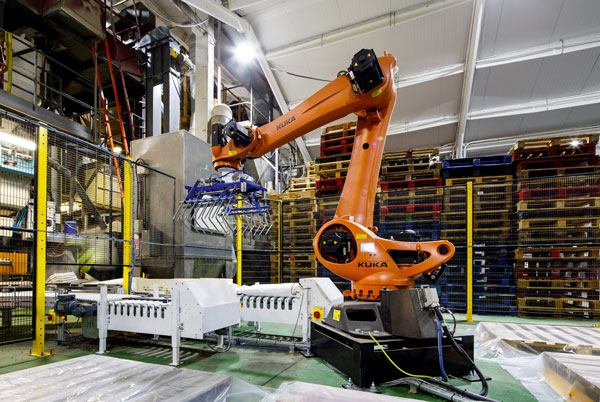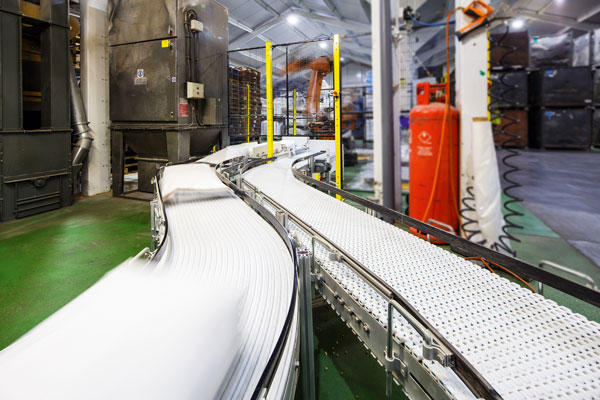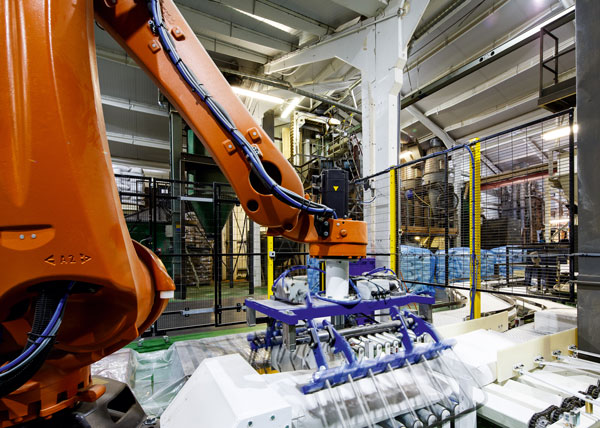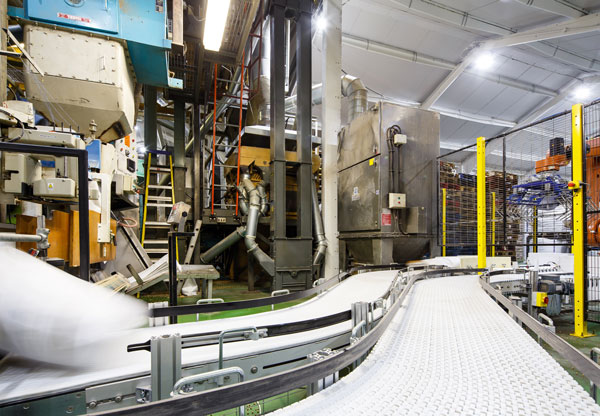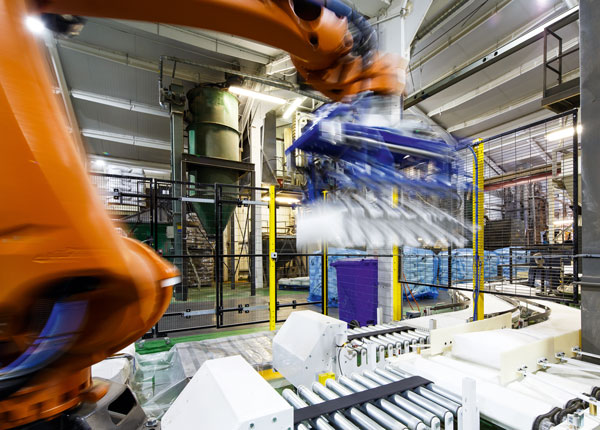Brief
Granta were asked by a medium sized food factory to look at ways of improving their current manual bag stacking process. They were packing dry, free-flowing, granular product into 25kg bags and then manually stacking the filled bags onto pallets at the end of the production line.
They had been having complaints from staff in relation to back pain due to lifting and stacking the 25kg bags all day. There were also other issues with manually stacking the bags onto pallets:
- Stacking quality was poor
- Other health and safety and RSI issues
- Manual labour was not fast enough to keep up with production speeds and was therefore reducing the machine’s output capacity.
With the need to increase production speeds and address the health and safety issues they were experiencing, they requested Granta to come up with a solution.
The Solution
We carried out an on-site assessment of the existing process so that we fully understood the customer’s requirements. During this assessment we realised that there was an added challenge to automating the palletising process: once the bag had been laid down after the mouth of the bag had been stitched, we would then need to redistribute the product within the bag, prior to stacking it on the pallet. We knew that flat bags were going to play a key part in achieving a neatly and safely stacked pallet.
Following our site visit, our automation consultants held a brainstorming session to come up with the best automation solution for this company. We explored ideas and methods and discussed these with our customer and collaboratively came up with the following solution.
We designed, built and installed a bespoke robotic palletising cell for the end of their production line which included:
- Bag flattening conveyors installed after the existing bag stitchers to redistribute the product in the bag.
- A robotic palletiser with a specialist bag gripper; designed to cope with the floppy nature of the bags.
- Specialist 3D safety scanner to protect the robot working area. A 3D safety scanner was installed because space was limited and an unusual layout was required to allow forklift access to the pallets.
- The ability to allow for different bag fill weights and product characteristics by adjusting the layer height on the pallet.
The solution proved to be very successful and gave the food company an increased production throughput of 150%!
The Sequel
With the installed automation having been so successful the customer asked us to replicate the same system on two more of their manual bagging lines. Our automation consultants reviewed the palletiser system we had installed and came up with a scheme of using one robot to serve the additional two lines rather than having to install two separate robots. This would save the customer cost and space.
Following consultation with the customer, we designed, built and installed the following system;
- Two bag flattening conveyors – one on each of the two lines after the existing bag stitchers.
- A KUKA robot with a specialist bag gripper that is able to stack to four pallet stations. The robot has the ability to stack the output from either line to any of the four stations; giving great flexibility to optimise the robot output to match the individual lines output.
- Fencing and guarding around the four pallet station stacking area and robot.
- A gate system with safe zone interlock to allow removal of two pallets while the palletiser continues stacking on the other two pallet stations.
The Final Outcome?
A very happy customer that has increased their production throughput significantly and improved health and safety in their workplace by reducing the risk of repetitive strain injuries.

